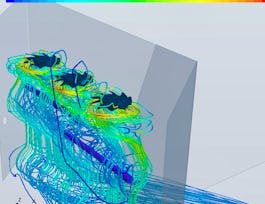Chemerinsky on Constitutional Law: Individual Rights and Liberties will highlight the construction and interpretation of the U.S. Constitution through the centuries with an emphasis on protections of individual liberties and the evolution of equal protection. You'll learn the history behind the Constitution, cases that formed important precedent, and how changes in interpretation have been dependent on shifts in cultural and political climate as well as the composition of the Supreme Court.



Chemerinsky on Constitutional Law – Individual Rights and Liberties

Instructor: Erwin Chemerinsky
12,085 already enrolled
Included with 
(78 reviews)
Details to know

Add to your LinkedIn profile
5 quizzes
See how employees at top companies are mastering in-demand skills


Earn a career certificate
Add this credential to your LinkedIn profile, resume, or CV
Share it on social media and in your performance review

There are 7 modules in this course
What's included
1 video3 readings
How are individual rights protected? In this module we’ll take a look at three of the structures that protect our individual liberties: the state action doctrine, the application of the bill of rights to the states, and the levels of scrutiny principle.
What's included
3 videos1 reading1 quiz
What rights are enumerated in the Constitution? How has the court's understanding and protection of these rights evolved? In this lecture we'll become familiar with the rights that are both specifically enumerated and implied by the text of the Constitution.
What's included
8 videos1 reading1 quiz1 peer review
In this module we’ll examine how equal protection has been applied to different suspect classifications such as race, gender, citizenship, and more. In addition, we will consider how the court has used levels of scrutiny in order to determine when the government can permissibly discriminate based upon suspect classifications.
What's included
7 videos1 reading1 quiz1 peer review
Why is freedom of speech protected as a fundamental right? What is its importance? In this module we’ll review four possible answers to this question. We’ll also examine the basic principles that guide the Supreme Court’s methodology when examining questions of free speech. Finally, we’ll take a look at the types of speech that have not been traditionally protected and the limitations that can be imposed on where protected forms of speech can be exercised.
What's included
4 videos1 reading1 quiz1 peer review
In our final lecture module, we’ll briefly examine the Lemon Test, named after the Lemon v. Kurtzman case in which it was first articulated, to see how the court has evaluated cases regarding the Establishment Clause. We’ll also take a look at how the court decides questions regarding the Free Exercise Clause.
What's included
1 video1 reading1 quiz1 peer review
As the course draws to a final close, we would like to thank you for your participation.
What's included
2 readings
Instructor

Offered by
Recommended if you're interested in Law

Arizona State University

University of Alberta

University of Michigan
Why people choose Coursera for their career




Learner reviews
Showing 3 of 78
78 reviews
- 5 stars
91.02%
- 4 stars
6.41%
- 3 stars
1.28%
- 2 stars
0%
- 1 star
1.28%

Open new doors with Coursera Plus
Unlimited access to 7,000+ world-class courses, hands-on projects, and job-ready certificate programs - all included in your subscription
Advance your career with an online degree
Earn a degree from world-class universities - 100% online
Join over 3,400 global companies that choose Coursera for Business
Upskill your employees to excel in the digital economy
Frequently asked questions
Access to lectures and assignments depends on your type of enrollment. If you take a course in audit mode, you will be able to see most course materials for free. To access graded assignments and to earn a Certificate, you will need to purchase the Certificate experience, during or after your audit. If you don't see the audit option:
The course may not offer an audit option. You can try a Free Trial instead, or apply for Financial Aid.
The course may offer 'Full Course, No Certificate' instead. This option lets you see all course materials, submit required assessments, and get a final grade. This also means that you will not be able to purchase a Certificate experience.
When you purchase a Certificate you get access to all course materials, including graded assignments. Upon completing the course, your electronic Certificate will be added to your Accomplishments page - from there, you can print your Certificate or add it to your LinkedIn profile. If you only want to read and view the course content, you can audit the course for free.
You will be eligible for a full refund until two weeks after your payment date, or (for courses that have just launched) until two weeks after the first session of the course begins, whichever is later. You cannot receive a refund once you’ve earned a Course Certificate, even if you complete the course within the two-week refund period. See our full refund policy.


